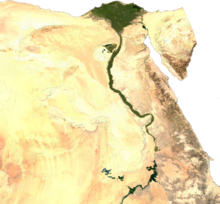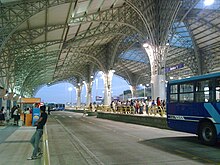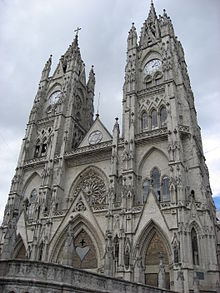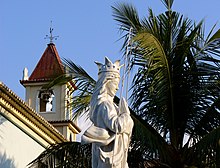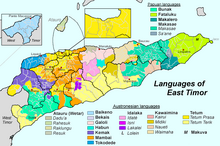
Egypt (Arabic: مصر Miṣr), authoritatively the Arab Republic of Egypt, is a transcontinental nation crossing the northeast corner of Africa and southwest corner of Asia by means of an area scaffold framed by the Sinai Peninsula. The greater part of its domain of 1,010,000 square kilometers (390,000 sq mi) lies inside North Africa and is flanked by the Mediterranean Sea to the north, the Gaza Strip and Israel to the northeast, the Red Sea to the east, Sudan to the south and Libya to the west.
Egypt is a standout amongst the most crowded nations in Africa and the Middle East, and the 15th above all populated in the planet. The incredible larger part of its over 82 million people exist close to the banks of the Nile River, a range of around 40,000 square kilometers (15,000 sq mi), where the main arable area is discovered. The huge areas of the Sahara Desert, which constitute the majority of Egypt's domain, are meagerly occupied. About a large part of Egypt's inhabitants exist in urban regions, with overwhelmingly spread opposite the thickly populated centres of more stupendous Cairo, Alexandria and other major urban communities in the Nile Delta.
Egypt has one of the longest histories of any present day state, having been persistently occupied since the 10th thousand years BCE. Its landmarks, for example the Giza pyramid complex and its Great Sphinx, were built by its antiquated human progress, which was a standout amongst the most progressed of now is the ideal time. Its aged destroys, for example those of Memphis, Thebes, Karnak, and the Valley of the Kings outside Luxor, are a huge center of archaeological study and prevalent interest. Egypt's rich customary legacy, and also the pull of its Red Sea Riviera, has made tourism a crucial part of the economy, utilizing in regards to 12% of the nation's workforce.
The economy of Egypt is a standout amongst the most differentiated in the Middle East, with parts for example tourism, agribusiness, industry and fixes at well-nigh equivalent processing levels. Egypt is recognized to be a center power, with huge social, political, and military impact in the Mediterranean, the Middle East and the Muslim planet.
Egypt is a standout amongst the most crowded nations in Africa and the Middle East, and the 15th above all populated in the planet. The incredible larger part of its over 82 million people exist close to the banks of the Nile River, a range of around 40,000 square kilometers (15,000 sq mi), where the main arable area is discovered. The huge areas of the Sahara Desert, which constitute the majority of Egypt's domain, are meagerly occupied. About a large part of Egypt's inhabitants exist in urban regions, with overwhelmingly spread opposite the thickly populated centres of more stupendous Cairo, Alexandria and other major urban communities in the Nile Delta.
Egypt has one of the longest histories of any present day state, having been persistently occupied since the 10th thousand years BCE. Its landmarks, for example the Giza pyramid complex and its Great Sphinx, were built by its antiquated human progress, which was a standout amongst the most progressed of now is the ideal time. Its aged destroys, for example those of Memphis, Thebes, Karnak, and the Valley of the Kings outside Luxor, are a huge center of archaeological study and prevalent interest. Egypt's rich customary legacy, and also the pull of its Red Sea Riviera, has made tourism a crucial part of the economy, utilizing in regards to 12% of the nation's workforce.
The economy of Egypt is a standout amongst the most differentiated in the Middle East, with parts for example tourism, agribusiness, industry and fixes at well-nigh equivalent processing levels. Egypt is recognized to be a center power, with huge social, political, and military impact in the Mediterranean, the Middle East and the Muslim planet.
Geography

Climate
The majority of Egypt's rain falls in the winter months. South of Cairo, precipitation midpoints just around 2 to 5 mm (0.1 to 0.2 in) for every year and at interims of numerous years. On an extremely flimsy piece of the northern coast the precipitation might be as towering as 410 mm (16.1 in), for the most part between October and March. Snow falls on Sinai's mountains and a portion of the north beachfront urban areas for example Damietta, Baltim, Sidi Barrany, and so on. what's more infrequently in Alexandria. Ice is additionally known in mid-Sinai and mid-Egypt.
Temperatures normal between 80 and 90 °F (26.7 and 32.2 °C) in summer, and up to 109 °F (43 °C) on the Red Sea coast. Winter temperatures normal between 55 and 70 °F (13 and 21 °C). An unfaltering wind from the northwest aides lower temperatures close to the Mediterranean coast. The Khamaseen is a wind that blows from the south in spring, carrying sand and dust, and some of the time raises the temperature in the desert to more than 100 °F (38 °C).
Before the development of the Aswan Dam, the Nile overwhelmed every twelve-months (casually The Gift of the Nile) renewing Egypt's soil. This gave the nation unwavering collect all through the years.
The potential ascent in ocean levels because of an Earth-wide temperature boost might scare Egypt's thickly populated beachfront strip and have grave outcomes for the nation's economy, horticulture and industry. Joined together with developing demographic forces, a noteworthy ascent in ocean levels might transform millions of Egyptians into natural exiles by the close of the century, consistent with some atmosphere experts.
Biodiversity
Egypt marked the Rio Convention on Biological Diversity on 9 June 1992, and ended up being a gathering to the meeting on 2 June 1994. It has in this way handled a National Biodiversity Strategy and Action Plan, which was appropriated by the meeting on 31 July 1998. Where numerous CBD National Biodiversity Strategy and Action Plans disregard living kingdoms separated from creatures and plants, Egypt's arrangement was unordinary in furnishing equalized qualified data regarding all types of essence.
The arrangement stated that the accompanying amounts of species of distinctive aggregations had been recorded from Egypt: pond greenery (1483 species), creatures (around 15,000 species of which more than 10,000 were bugs), growths (more than 627 species), monera (319 species), plants (2426 species), protozoans (371 species). For some major aggregations, for instance lichen-shaping organisms and nematode worms, the number was not known. Separated from modest and overall-examined gatherings like creatures of land and water, winged creatures, angle, warm blooded animals and reptiles, the large portions of the aforementioned numbers are prone to build as further species are recorded from Egypt. For the growths, incorporating lichen-structuring species, for instance, ensuing work has indicated that over 2200 species have been recorded from Egypt, and the last figure of all growths really happening in the nation is needed to be much higher.
Demographics

Egypt is the most populated nation in the Middle East, and the third overwhelmingly crowded on the African mainland, with around 80 million occupants as of 2009. Its inhabitants present developed quickly from 1970 to 2010 because of medicinal developments and expands in agrarian gainfulness empowered by the Green Revolution. Egypt's citizenry was evaluated at just 3 million when Napoleon attacked the nation in 1798.
Egypt's individuals are exceptionally urbanized, being thought along the Nile (prominently Cairo and Alexandria), in the Delta and close to the Suez Canal. Egyptians are partitioned demographically into those who exist in the major urban focuses and the fellahin, or harvesters, that dwell in rustic villages.
Egyptians are by a wide margin the greatest ethnic gathering in the nation, constituting 91% of the sum population. Ethnic minorities incorporate the Abazas, Turks, Greeks, Bedouin Arab tribes living in the eastern deserts and the Sinai Peninsula, the Berber-articulating Siwis (Amazigh) of the Siwa Oasis, and the Nubian neighborhoods grouped along the Nile. There are likewise tribal Beja groups moved in the south-eastern-by and large corner, and various Dom tribes chiefly in the Nile Delta and Faiyum who are dynamically appropriate acclimatized as urbanization builds.
As per the International Organization for Migration, an expected 2.7 million Egyptians exist abroad. More or less 70% of Egyptian transients exist in Arab nations (923,600 in Saudi Arabia, 332,600 in Libya, 226,850 in Jordan, 190,550 in Kuwait with the rest somewhere else in the locale) and the remaining 30% dwell for the most part in Europe and North America (318,000 in the United States, 110,000 in Canada and 90,000 in Italy).
Egypt moreover hosts an unfamiliar number of displaced people and shelter seekers, assessed to be between 500,000 and 3 million. There are nearly 70,000 Palestinian refugees, and around 150,000 lately arrived Iraqi refugees, however the amount of the greatest gathering, the Sudanese, is contested. The once-vibrant Greek and Jewish neighborhoods in Egypt have very nearly vanished, with just a modest number staying in the nation, yet numerous Egyptian Jews visit on religious events and for tourism. Numerous critical Jewish archaeological and academic destinations are discovered in Cairo, Alexandria and different urban communities.
Languages
The official dialect of the Republic is Modern Standard Arabic. The articulated dialects are: Egyptian Arabic (68%), Sa'idi Arabic (29%), Eastern Egyptian Bedawi Arabic (1.6%), Sudanese Arabic (0.6%), Domari (0.3%), Nobiin (0.3%), Beja (0.1%), Siwi and others. Moreover, Greek, Armenian and Italian are the essential dialects of foreigners. In Alexandria in the 19th century there was a substantial group of Italian Egyptians and Italian was the "lingua franca" of the city.
The primary strange dialects showed in schools, by request of fame, are English, French, German and Italian.
Authentic Egyptian dialects, otherwise called Copto-Egyptian, comprise of antiquated Egyptian and Coptic, and shape a discrete limb around the group of Afro-Asiatic dialects. The "Koiné" tongue of the Greek dialect, however not local to Egypt, was paramount in Hellenistic Alexandria, and was utilized broadly within the reasoning and art of that society, later being the subject of study by Arab researchers.
Religion

Egypt is a transcendently Sunni Muslim nation with Islam as its state religion. The rate of the followers of different religions is a disputable theme in Egypt. Around 90% are distinguished as Muslim, 9% are Coptic Christians, and other Christian sections make up the remaining 1%.
Islam landed in the 7th century, and Egypt developed as a core of governmental issues and society in the Muslim planet. Under Anwar Sadat, Islam ended up being the official state religion and Sharia the fundamental source of law. A noteworthy number of Muslim Egyptians accompany local Sufi orders, and there is a minority of Shi'a. Cairo is celebrated internationally for its various mosque minarets and is named "the city of 1,000 minarets".
There is a huge Christian minority in Egypt. Over 90% of Egyptian Christians have a place with the local Coptic Orthodox Church of Alexandria, an Oriental Orthodox Church. Other local Egyptian Christians are followers of the Coptic Catholic Church, the Evangelical Church of Egypt and different other Protestant divisions. Non-local Christian neighborhoods are substantially discovered in the urban districts of Cairo and Alexandria.
Egypt hosts two major religious foundations, the Coptic Orthodox Church of Alexandria, secured in the midst of the 1st century by Saint Mark the Evangelist, and Al-Azhar University, organized in 970 CE by the Fatimids as the first Islamic University in the planet.
Egypt distinguishes just three religions: Islam, Christianity, and Judaism. Different belief systems drilled by Egyptians, for example the little Bahá'í group, are not distinguished by the state. People wishing to incorporate such religions on their state issued recognizable pieces of proof are denied (see Egyptian recognizable proof card quarrel), and had been put in the position of either not getting needed ID or lying in regards to their trust. A 2008 court administering permitted parts of unrecognized belief systems to acquire recognizable proof and leave the religion field blank.
Education
The grown-up proficiency rate in 2010 was 72.0%.
An European-style training framework was first presented in Egypt by the Ottomans in the early 19th century, keeping in mind the end goal to nurture a class of unwavering administrators and armed force officers. Under the British occupation financing in training was then controled definitely, and mainstream open schools, which had beforehand been unlimited, started to charge fees.
In the 1950s, Nasser staged in unhindered instruction for all Egyptians. The Egyptian curriculum affected other Arab training frameworks, which regularly utilized Egyptian-prepared teachers. Demand soon exceeded the level of ready state assets, bringing on the nature of open training to deteriorate. Today this drift has climaxed in oppressed teacher–student degrees (frequently around one to fifty) and diligent sex inequality.
Fundamental instruction, which incorporates six years of essential and three years of preparatory school, is an ideal for Egyptian youngsters from the time period characterized by six. After evaluation 9, scholars are followed into one of two strands of optional instruction: general or specialized schools. General auxiliary training arranges people for further training, and graduates of this track typically join higher instruction establishes dependent upon the outcomes of the Thanaweya Amma, the leaving exam.
Specialized auxiliary training has two strands, one enduring three years, and a progressively propelled instruction continuing to tick five. Graduates of the aforementioned schools might have access to higher training dependent upon their outcomes on the end of the year test, yet this is for the most part uncommon.
Consistent with the Webometrics Ranking of World Universities, the top-standing schools in Egypt are Cairo University (1203rd worldwide), American University in Cairo (1306th) and Mansoura University (1712th).
Miss Egypt 2012:
The majority of Egypt's rain falls in the winter months. South of Cairo, precipitation midpoints just around 2 to 5 mm (0.1 to 0.2 in) for every year and at interims of numerous years. On an extremely flimsy piece of the northern coast the precipitation might be as towering as 410 mm (16.1 in), for the most part between October and March. Snow falls on Sinai's mountains and a portion of the north beachfront urban areas for example Damietta, Baltim, Sidi Barrany, and so on. what's more infrequently in Alexandria. Ice is additionally known in mid-Sinai and mid-Egypt.
Temperatures normal between 80 and 90 °F (26.7 and 32.2 °C) in summer, and up to 109 °F (43 °C) on the Red Sea coast. Winter temperatures normal between 55 and 70 °F (13 and 21 °C). An unfaltering wind from the northwest aides lower temperatures close to the Mediterranean coast. The Khamaseen is a wind that blows from the south in spring, carrying sand and dust, and some of the time raises the temperature in the desert to more than 100 °F (38 °C).
Before the development of the Aswan Dam, the Nile overwhelmed every twelve-months (casually The Gift of the Nile) renewing Egypt's soil. This gave the nation unwavering collect all through the years.
The potential ascent in ocean levels because of an Earth-wide temperature boost might scare Egypt's thickly populated beachfront strip and have grave outcomes for the nation's economy, horticulture and industry. Joined together with developing demographic forces, a noteworthy ascent in ocean levels might transform millions of Egyptians into natural exiles by the close of the century, consistent with some atmosphere experts.
Biodiversity
Egypt marked the Rio Convention on Biological Diversity on 9 June 1992, and ended up being a gathering to the meeting on 2 June 1994. It has in this way handled a National Biodiversity Strategy and Action Plan, which was appropriated by the meeting on 31 July 1998. Where numerous CBD National Biodiversity Strategy and Action Plans disregard living kingdoms separated from creatures and plants, Egypt's arrangement was unordinary in furnishing equalized qualified data regarding all types of essence.
The arrangement stated that the accompanying amounts of species of distinctive aggregations had been recorded from Egypt: pond greenery (1483 species), creatures (around 15,000 species of which more than 10,000 were bugs), growths (more than 627 species), monera (319 species), plants (2426 species), protozoans (371 species). For some major aggregations, for instance lichen-shaping organisms and nematode worms, the number was not known. Separated from modest and overall-examined gatherings like creatures of land and water, winged creatures, angle, warm blooded animals and reptiles, the large portions of the aforementioned numbers are prone to build as further species are recorded from Egypt. For the growths, incorporating lichen-structuring species, for instance, ensuing work has indicated that over 2200 species have been recorded from Egypt, and the last figure of all growths really happening in the nation is needed to be much higher.
Demographics

Egypt is the most populated nation in the Middle East, and the third overwhelmingly crowded on the African mainland, with around 80 million occupants as of 2009. Its inhabitants present developed quickly from 1970 to 2010 because of medicinal developments and expands in agrarian gainfulness empowered by the Green Revolution. Egypt's citizenry was evaluated at just 3 million when Napoleon attacked the nation in 1798.
Egypt's individuals are exceptionally urbanized, being thought along the Nile (prominently Cairo and Alexandria), in the Delta and close to the Suez Canal. Egyptians are partitioned demographically into those who exist in the major urban focuses and the fellahin, or harvesters, that dwell in rustic villages.
Egyptians are by a wide margin the greatest ethnic gathering in the nation, constituting 91% of the sum population. Ethnic minorities incorporate the Abazas, Turks, Greeks, Bedouin Arab tribes living in the eastern deserts and the Sinai Peninsula, the Berber-articulating Siwis (Amazigh) of the Siwa Oasis, and the Nubian neighborhoods grouped along the Nile. There are likewise tribal Beja groups moved in the south-eastern-by and large corner, and various Dom tribes chiefly in the Nile Delta and Faiyum who are dynamically appropriate acclimatized as urbanization builds.
As per the International Organization for Migration, an expected 2.7 million Egyptians exist abroad. More or less 70% of Egyptian transients exist in Arab nations (923,600 in Saudi Arabia, 332,600 in Libya, 226,850 in Jordan, 190,550 in Kuwait with the rest somewhere else in the locale) and the remaining 30% dwell for the most part in Europe and North America (318,000 in the United States, 110,000 in Canada and 90,000 in Italy).
Egypt moreover hosts an unfamiliar number of displaced people and shelter seekers, assessed to be between 500,000 and 3 million. There are nearly 70,000 Palestinian refugees, and around 150,000 lately arrived Iraqi refugees, however the amount of the greatest gathering, the Sudanese, is contested. The once-vibrant Greek and Jewish neighborhoods in Egypt have very nearly vanished, with just a modest number staying in the nation, yet numerous Egyptian Jews visit on religious events and for tourism. Numerous critical Jewish archaeological and academic destinations are discovered in Cairo, Alexandria and different urban communities.
Languages
The official dialect of the Republic is Modern Standard Arabic. The articulated dialects are: Egyptian Arabic (68%), Sa'idi Arabic (29%), Eastern Egyptian Bedawi Arabic (1.6%), Sudanese Arabic (0.6%), Domari (0.3%), Nobiin (0.3%), Beja (0.1%), Siwi and others. Moreover, Greek, Armenian and Italian are the essential dialects of foreigners. In Alexandria in the 19th century there was a substantial group of Italian Egyptians and Italian was the "lingua franca" of the city.
The primary strange dialects showed in schools, by request of fame, are English, French, German and Italian.
Authentic Egyptian dialects, otherwise called Copto-Egyptian, comprise of antiquated Egyptian and Coptic, and shape a discrete limb around the group of Afro-Asiatic dialects. The "Koiné" tongue of the Greek dialect, however not local to Egypt, was paramount in Hellenistic Alexandria, and was utilized broadly within the reasoning and art of that society, later being the subject of study by Arab researchers.
Religion

Egypt is a transcendently Sunni Muslim nation with Islam as its state religion. The rate of the followers of different religions is a disputable theme in Egypt. Around 90% are distinguished as Muslim, 9% are Coptic Christians, and other Christian sections make up the remaining 1%.
Islam landed in the 7th century, and Egypt developed as a core of governmental issues and society in the Muslim planet. Under Anwar Sadat, Islam ended up being the official state religion and Sharia the fundamental source of law. A noteworthy number of Muslim Egyptians accompany local Sufi orders, and there is a minority of Shi'a. Cairo is celebrated internationally for its various mosque minarets and is named "the city of 1,000 minarets".
There is a huge Christian minority in Egypt. Over 90% of Egyptian Christians have a place with the local Coptic Orthodox Church of Alexandria, an Oriental Orthodox Church. Other local Egyptian Christians are followers of the Coptic Catholic Church, the Evangelical Church of Egypt and different other Protestant divisions. Non-local Christian neighborhoods are substantially discovered in the urban districts of Cairo and Alexandria.
Egypt hosts two major religious foundations, the Coptic Orthodox Church of Alexandria, secured in the midst of the 1st century by Saint Mark the Evangelist, and Al-Azhar University, organized in 970 CE by the Fatimids as the first Islamic University in the planet.
Egypt distinguishes just three religions: Islam, Christianity, and Judaism. Different belief systems drilled by Egyptians, for example the little Bahá'í group, are not distinguished by the state. People wishing to incorporate such religions on their state issued recognizable pieces of proof are denied (see Egyptian recognizable proof card quarrel), and had been put in the position of either not getting needed ID or lying in regards to their trust. A 2008 court administering permitted parts of unrecognized belief systems to acquire recognizable proof and leave the religion field blank.
Education
The grown-up proficiency rate in 2010 was 72.0%.
An European-style training framework was first presented in Egypt by the Ottomans in the early 19th century, keeping in mind the end goal to nurture a class of unwavering administrators and armed force officers. Under the British occupation financing in training was then controled definitely, and mainstream open schools, which had beforehand been unlimited, started to charge fees.
In the 1950s, Nasser staged in unhindered instruction for all Egyptians. The Egyptian curriculum affected other Arab training frameworks, which regularly utilized Egyptian-prepared teachers. Demand soon exceeded the level of ready state assets, bringing on the nature of open training to deteriorate. Today this drift has climaxed in oppressed teacher–student degrees (frequently around one to fifty) and diligent sex inequality.
Fundamental instruction, which incorporates six years of essential and three years of preparatory school, is an ideal for Egyptian youngsters from the time period characterized by six. After evaluation 9, scholars are followed into one of two strands of optional instruction: general or specialized schools. General auxiliary training arranges people for further training, and graduates of this track typically join higher instruction establishes dependent upon the outcomes of the Thanaweya Amma, the leaving exam.
Specialized auxiliary training has two strands, one enduring three years, and a progressively propelled instruction continuing to tick five. Graduates of the aforementioned schools might have access to higher training dependent upon their outcomes on the end of the year test, yet this is for the most part uncommon.
Consistent with the Webometrics Ranking of World Universities, the top-standing schools in Egypt are Cairo University (1203rd worldwide), American University in Cairo (1306th) and Mansoura University (1712th).
Miss Egypt 2012:
